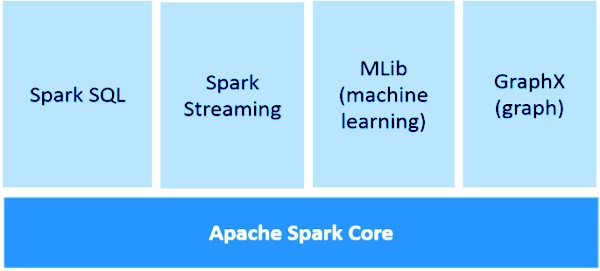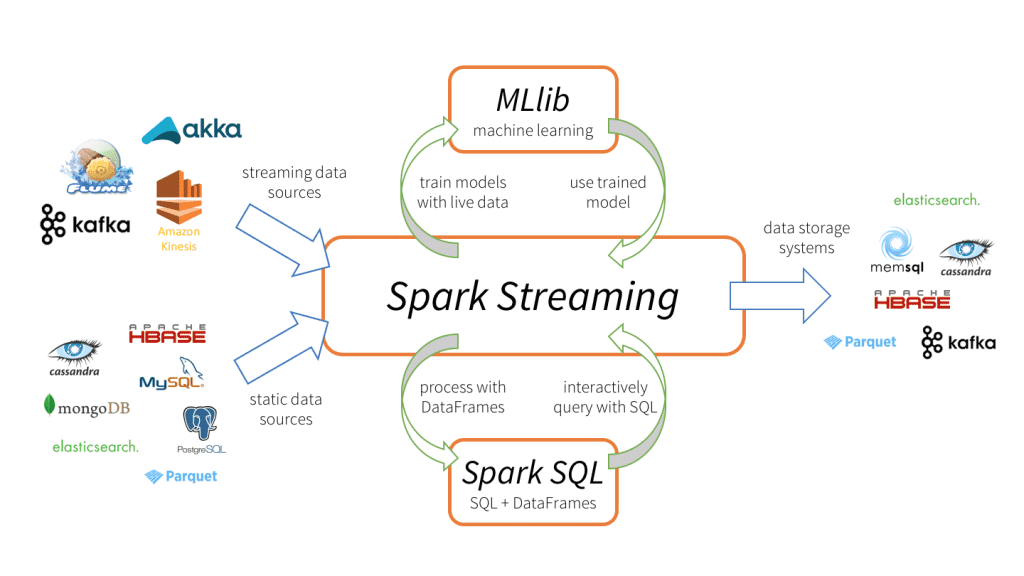This article was published as a part of the Data Science Blogathon
In today’s technology-driven world, every second a vast amount of data is generated. Constant monitoring and right analysis of such data are necessary to draw meaningful and useful insights.
Real-time data from sensors, IoT devices, log files, social networks, etc. needs to be closely monitored and immediately processed. Therefore, for real-time data analytics, we need a highly scalable, reliable, and fault-tolerant data streaming engine.
Data Streaming
Data streaming is a way of collecting data continuously in real-time from multiple data sources in the form of data streams. Datastream can be thought of as a table that is continuously being appended.
Data streaming is essential for handling massive amounts of live data. Such data can be from a variety of sources like online transactions, log files, sensors, in-game player activities, etc.
There are various real-time data streaming techniques like Apache Kafka, Spark Streaming, Apache Flume etc. In this post, we will discuss data streaming using Spark Streaming.
Spark Streaming

Spark Streaming is an integral part of Spark core API to perform real-time data analytics. It allows us to build a scalable, high-throughput, and fault-tolerant streaming application of live data streams.
Spark Streaming supports the processing of real-time data from various input sources and storing the processed data to various output sinks.

Spark Streaming has 3 major components as shown in the above image.
-
Input data sources: Streaming data sources (like Kafka, Flume, Kinesis, etc.), static data sources (like MySQL, MongoDB, Cassandra, etc.), TCP sockets, Twitter, etc.
-
Spark Streaming engine: To process incoming data using various built-in functions, complex algorithms. Also, we can query live streams, apply machine learning using Spark SQL and MLlib respectively.
-
Output Sinks: processed data can be stored to file systems, databases(relational and NoSQL), live dashboards etc.
Such unique data processing capabilities, input and output formatting make Spark Streaming more attractive, which further leads to rapid adoption.
Advantages of Spark Streaming
-
Unified streaming framework for all data processing tasks( including machine learning, graph processing, SQL operations) on live data streams.
-
Dynamic load balancing and better resource management by efficiently balancing the workload across the workers and launching the task in parallel.
-
Deeply integrated with advanced processing libraries like Spark SQL, MLlib, GraphX.
-
Faster recovery from failures by re-launching the failed tasks in parallel on other free nodes.
Spark Streaming Fundamentals
Spark Streaming divides the live input data streams into batches which are further processed by Spark engine.

DStream (Discretized Stream)
DStream is a high-level abstraction provided by Spark Streaming, basically, it signifies the continuous stream of data. They can be created either from streaming data sources (like Kafka, Flume, Kinesis, etc.) or by performing high-level operations on other DStreams.
Internally DStream is a sequence of RDDs and this phenomenon allows Spark Streaming to integrate with other Spark components like MLlib, GraphX, etc.

While creating a streaming application we also need to specify the batch duration to create new batches at regular time intervals. Typically, the batch duration varies from 500 ms to several seconds. For e.g. it is 3 seconds then the input data is collected every 3 seconds.
Spark Streaming allows you to write code in popular programming languages like Python, Scala and Java. Let’s discuss a sample streaming application using PySpark.
Sample Application
As we discussed earlier, Spark Streaming also allows receiving data streams using TCP sockets. So let’s write a simple streaming program to receive text data streams on a particular port, perform basic text cleaning (like white space removal, stop words removal, lemmatization, etc.), and print the cleaned text on the screen.
Now let’s start implementing this by following the steps below.
1. Creating Streaming Context and Receiving data streams
StreamingContext is the main entry point for any streaming application. It can be created by instantiating StreamingContext class from pyspark.streaming module.
from pyspark import SparkContext from pyspark.streaming import StreamingContext
While creating StreamingContext we can specify the batch duration, for e.g. here the batch duration is 3 seconds.
sc = SparkContext(appName = "Text Cleaning") strc = StreamingContext(sc, 3)
Once the StreamingContext is created, we can start receiving data in the form of DStream through TCP protocol on a specific port. For e.g. here the hostname is specified as “localhost” and port used is 8084.
text_data = strc.socketTextStream("localhost", 8084)
2. Performing operations on data streams
After creating a DStream object, we can perform operations on it as per the requirement. Here, we wrote a custom text cleaning function.
This function first converts the input text into lower case, then removes extra spaces, non-alphanumeric characters, links/URLs, stop words, and then further lemmatizes the text using the NLTK library.
import re
from nltk.corpus import stopwords
stop_words = set(stopwords.words('english'))
from nltk.stem import WordNetLemmatizer
lemmatizer = WordNetLemmatizer()
def clean_text(sentence):
sentence = sentence.lower()
sentence = re.sub("s+"," ", sentence)
sentence = re.sub("W"," ", sentence)
sentence = re.sub(r"httpS+", "", sentence)
sentence = ' '.join(word for word in sentence.split() if word not in stop_words)
sentence = [lemmatizer.lemmatize(token, "v") for token in sentence.split()]
sentence = " ".join(sentence)
return sentence.strip()
3. Starting the Streaming service
The streaming service has not started yet. Use the start() function on top of the StreamingContext object to start it and keep on receiving streaming data until the termination command (Ctrl + C or Ctrl + Z) is not received by awaitTermination() function.
strc.start() strc.awaitTermination()
NOTE – The complete code can be downloaded from here.
Now first we need to run the ‘nc’ command (Netcat Utility) to send the text data from the data server to the spark streaming server. Netcat is a small utility available in Unix-like systems to read from and write to network connections using TCP or UDP ports. Its two main options are –
-
-l: To allow nc to listen to an incoming connection rather than initiating a connection to a remote host.
-
-k: Forces nc to stay listening for another connection after its current connection is completed.
So run the following nc command in the terminal.
nc -lk 8083
Similarly, run the pyspark script in a different terminal using the following command in order to perform text cleaning on the received data.
spark-submit streaming.py localhost 8083
As per this demo, any text written in the terminal (running netcat server) will be cleaned and the cleaned text is printed in another terminal after every 3 seconds (batch duration).


End Notes
In this article, we discussed Spark Streaming, its benefits in real-time data streaming, and a sample application (using TCP sockets) to receive the live data streams and process them as per the requirement.
The media shown in this article on Deploying Machine Learning Models leveraging CherryPy and Docker are not owned by Analytics Vidhya and are used at the Author’s discretion.




